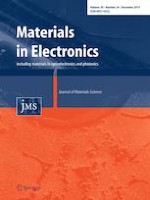2.3 Characterization of polyethylene composites
The sample structure was examined by scanning electron microscopy (SEM) Jeol 5500 L operating in high vacuum and with accelerating voltage of 30 kV. The ETD high pressure detector with the secondary electrons (SE) detection was used. SEM photos of representative areas were taken. Energy dispersive X-ray (EDX) analysis has been simultaneously performed to observe the elemental composition of the specimen surface.
The composite interior was imaged after brittle fracture of the samples in liquid nitrogen. The tested sample surfaces were sputtered with gold.
X-ray diffraction (XRD) patterns were obtained by X’PERT Pro Philips diffractometer (with Ni-filtered Cu Kα1 radiation; wavelength 1.54056 Å) in the range of 2θ = 10°–60° by the step of 0.02°.
The recorded XRD profiles have been used for determination of the degree of crystallinity (XXRD, %) of PE expressed as the ratio of the peak area of the crystalline phase to total surface area under the curve (which is a sum of crystalline peaks areas and amorphous halo). The calculations were made for the range of 2θ = 10°–30° after mathematical analysis of the curve for the component peaks. Curve fitting has been done using Voigt function.
The PE crystallites size, using the main signal (110), has been calculated from Sherrer equation [
30]:
$${\text{L}}_{\text{hkl}} = \frac{0.9\lambda }{\cos \theta }$$
where L
hkl is the crystallites size, λ is the wavelength of X-ray, β is the full width at half maximum (FWHM), θ is the Bragg angle.
Differential scanning calorimetry (DSC) has been done using Mettler Toledo, DSC1 Star System. The samples were tested in 3 runs: 1—heating, 2—cooling, and 3—reheating in the temperature range of 0–300 °C. After completion of the first heating and cooling cycle, the sample was held at a constant temperature for 3 min. The heating and cooling rate was 10°/min. The nitrogen flow rate was 60 ml/s.
The crystallinity degree (X
DSC, %) has been calculated based on the determined heat of fusion (ΔH). The value of PE heat of fusion per unit volume (ΔH
100%) taken from the literature was 293 J/g [
31].
Mechanical strength was tested using TIRAtest 27025 tensile apparatus according to the standard PN-EN ISO 527-1:2012. In the initial stage, i.e., in the 0–2% of elongation, corresponding to the linear region in which Hooke’s law is applicable, the feed speed of crosshead was 1.0 mm/min to determine the exact modulus of elasticity (Et, MPa). Then, the speed increased to 100.0 mm/min and was held until the sample was broken. The length of the measuring section was 50 mm, the head load was 3 kN. In addition to Et, the maximum stress (σM, MPa), stress at break—ultimate strength (σB, MPa), maximum elongations (εM, %), and elongation at break (ultimate elongation εb, %) have been determined. The obtained results are an average of 6–10 measurements.
Thermal stability was studied in nitrogen atmosphere using SDT 2960 Simultaneous TGA–DTA Thermal Analyser (TA Instruments, USA). The heating rate was 10°/min and the temperature range was up to 700 °C. The temperature of the degradation onset (To) was determined from the intersection of tangents to the TG curve, while the maximal rate of thermal degradation (Vmax, %/min) and the corresponding temperature (Tmax) was read from DTG. The nature of the transformation (exo- or endo-) as well as the melting temperature was obtained from the DTA curves registered simultaneously with TG.
FTIR spectra have been recorded using Vertex 70v with RT-DLaTGS Wide Range detector and ATR device, Bruker Optik, with diamond crystal. The mathematical distribution of the complex spectrum into components has been done using Voigt function to get the best fit to the recorded spectrum shape.
To generate the piezoelectric properties, the samples were placed between two contact electrodes with an area of 10 cm2 and then they were polarized in a fixed electric field of 100 V/μm at 85 °C. The thickness of the films was ~ 130 μm for the non-oriented samples and ~ 80 μm for the oriented ones. The piezoelectric charge (q, pC) and voltage (U, V) were measured using a stress increasing up to 120 kPa. The device was consisted of an electromagnetic actuator, Tektonikx AWG 420 generator (Arbitrary Waveform Generator), Mera Tronik P334 power amplifier, XFL212R force sensor, ADR 154 amplifier, Keithley 6517A electrometer, and LeCroy LT-341 oscilloscope. The force acted in the direction perpendicular to the sample surface was consistent with the direction of the electric field. From the above measurements, two piezoelectric coefficients were calculated: charge coefficient—d33 = q/P (pC/N) and piezoelectric voltage coefficient—g33 = q/(P·d) [Vm/N], where P is stress (Pa) and d is sample thickness (m).
Stability of electrets was studied during 2–5 months, taking measurements every few days. At least five samples of the same type have been tested simultaneously to check the piezoelectric properties and the result is the averaged value from three tests.
